India's Elections #2 - Good Morning, Bangalore - It's V-Day!
![]()
On April 23, voters in Bangalore and other parts of Karnataka went to the polls to cast their votes in Phase 2 of the national election. We had hoped that we would be able to witness V-Day as we traveled around India, and this was our chance.
Unlike in Kerala, we observed no posters, banners, or loudspeaker trucks anywhere. But on opening the morning paper on both election day and the day before, there was no doubt that this was a special day.
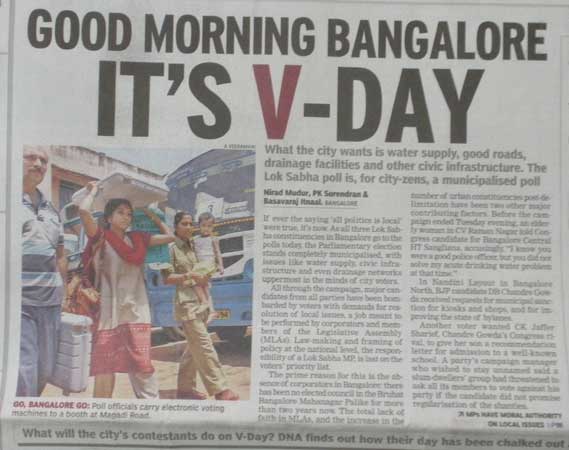
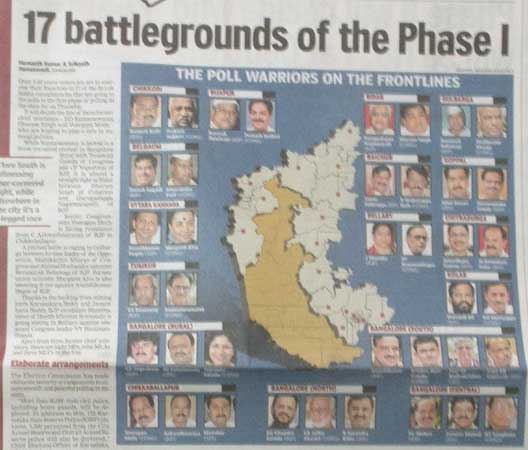
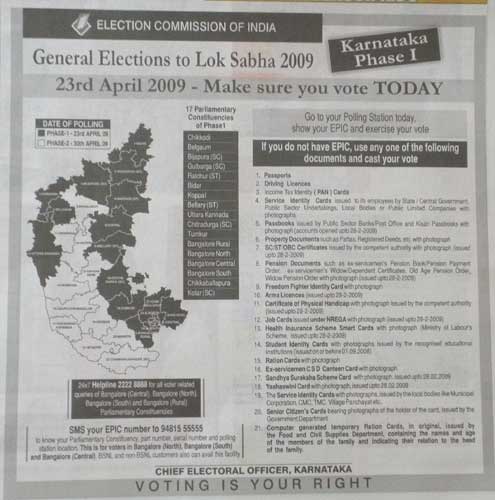

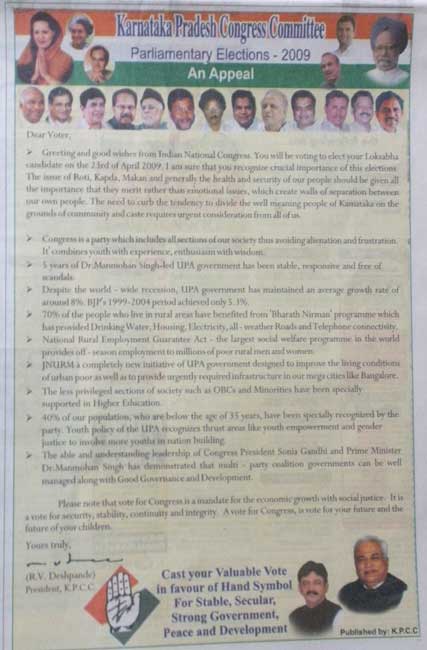 In DNA (Daily News Analysis), the local English language newspaper, there was little coverage of the accusations, denials, and political rhetoric we had seen elsewhere. Even the political ads focused on issues and performance.
In DNA (Daily News Analysis), the local English language newspaper, there was little coverage of the accusations, denials, and political rhetoric we had seen elsewhere. Even the political ads focused on issues and performance.
We learned that in Bangalore, local issues dominate voters list of concerns. "What the city wants is water supply, good roads, drainage facilities and other civic infrastructure. The Lok Sabha poll is, for city-zens, a municipalised poll," announced DNA. It seems that there is a vacuum in local government - there has been no elected council in the Bangalore Metro Area for more than two years - and people feel that the Karnataka legislators are unresponsive.
As observers, we wondered if the newly elected MPs (Members of Parliament) will be able to respond to voters local concerns from their lofty perches in Delhi.
Issues aside, what about the election process? Here's what we learned:
DNA provided plenty of voter education, including pictures of the voting machines with descriptions of the process. The newspaper had run a campaign urging people to vote, concluding on election morning with featured pages of young voters and celebrities urging others to vote. We were impressed by the amount of space dedicated in the DNA newspaper to promote the election and urge people to vote.
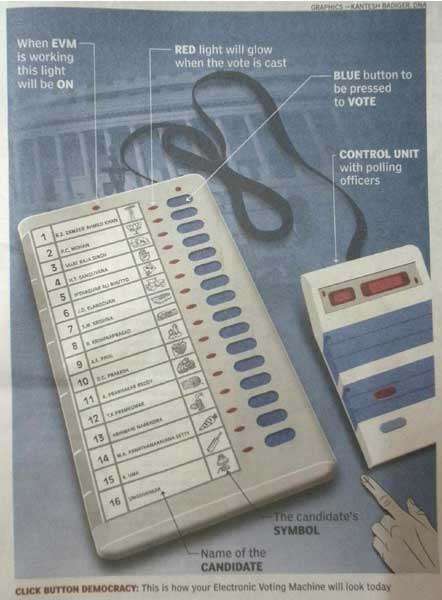
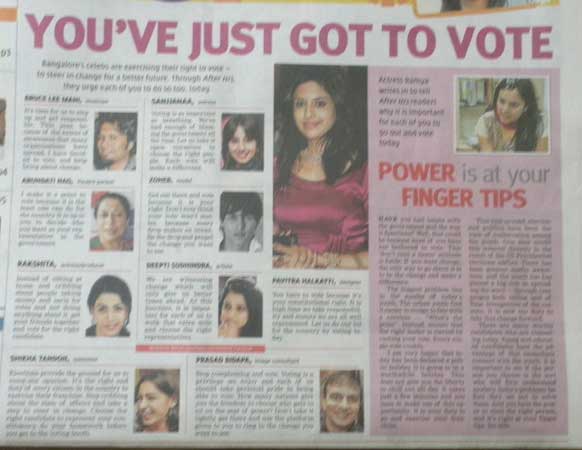
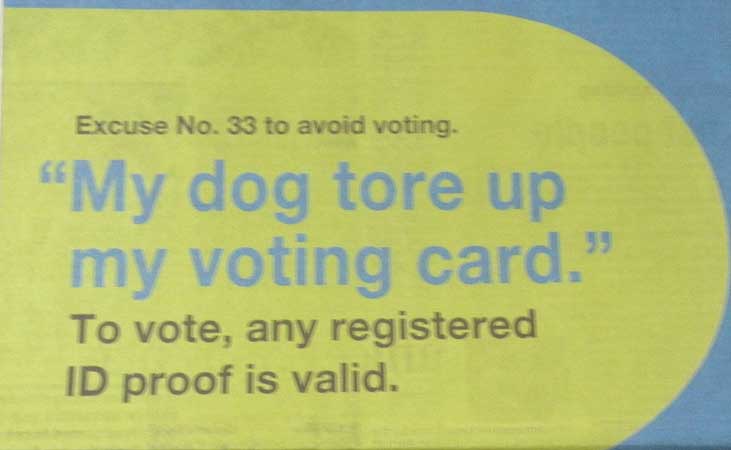
No excuses allowed!
The paper also featured large ads offering typical excuses for not voting and the Election Commission response:
In Bangalore, the election campaign was garbage-free. The local Election Commission (EC) issued a strict code of conduct, banning use of disposable posters, banners and cutouts of candidates, in order to reduce the garbage generation! Plastic was banned, too. This resulted in a 90% trash reduction due to high compliance by the candidates and their political parties. We therefore saw few signs and those we did see were being taken down by the candidates the following day.
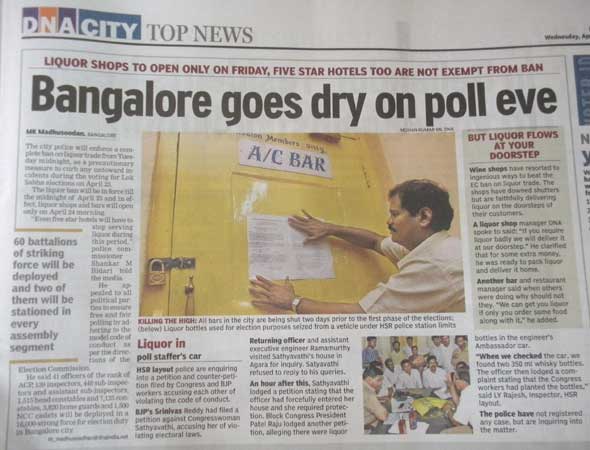
Companies declared a holiday. Many of Bangalore's employers, including Infosys, Wipro and MindTree, as well as many smaller firms gave their workers a day off or allowed time off to vote during work hours.
No alcohol sales allowed. From midnight on election eve until morning the day after, all sales of alcoholic beverages were banned, pubs and liquor stores were shuttered, and restaurants stopped serving alcoholic drinks, to help ensure a sober electorate.
The Nuts and Bolts:

Only people whose names appeared on the electoral rolls were allowed to vote. Voters could check these rolls before election day, and obtain a serial number associated with their voter listing, to assist the poll workers.
Many voters had received an Election Photo Identity Card (EPIC) to confirm identity.
In case a voter did not have an EPIC, there were 21 alternative documents that could be used instead as ID. The EC established a Call Center and also an SMS service to assist voters to find their polling booth.
The How-to:
To see how it worked, we visited a polling booth at a school. We were allowed to visit the polling booth but not to take pictures inside.
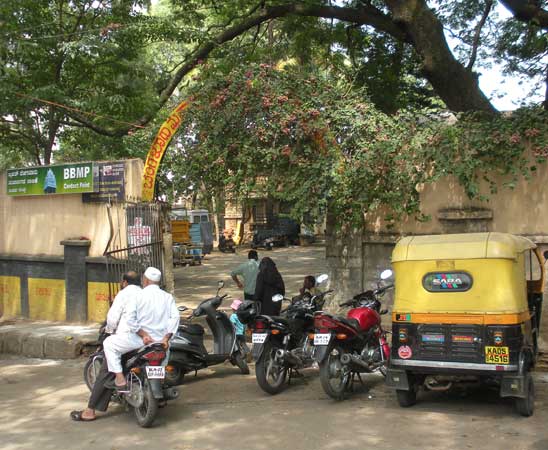
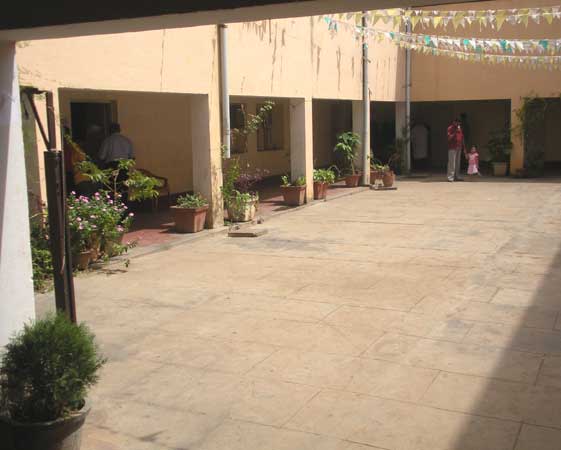
Voters waited in a queue only a short time before arriving at the desk where workers located the voter's name on the electoral roll. These rolls were paper copies, each page was filled with essential information and in most cases images for voters to confirm eligibility.
The voter needed to show an EPIC or one of 21 other forms of ID to verify her/his identity. This ID was then matched with the electoral roll. Once approved, the voter was given access to the Electronic Voting Machine (EVM). They then located the candidate's name and symbol, and pushed a blue button beside the name. A red light and beep signaled that the vote had been cast. After voting each voter received an indelible ink mark on her/his forefinger. That was it!
Along the side of the room, representatives of each candidate watched and checked their own copies of the electoral roll. Several guards were posted outside to ensure an orderly process. An election official told us that all had proceeded smoothly. The queues at this location were not too long and voters were able to vote with little delay.
We walked away feeling privileged to have been witnesses to one tiny piece of this great pageant of democracy.
On April 30, May 7 and May 14, a similar voting process took place in other areas of the country. The final results were announced soon thereafter.
Click here to read the next installment in this story, or
Click here to return to our PioneerWest homepage
![]()